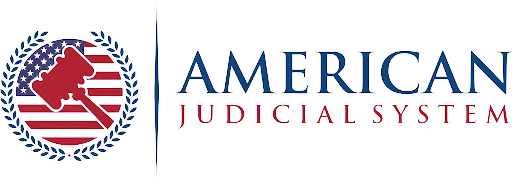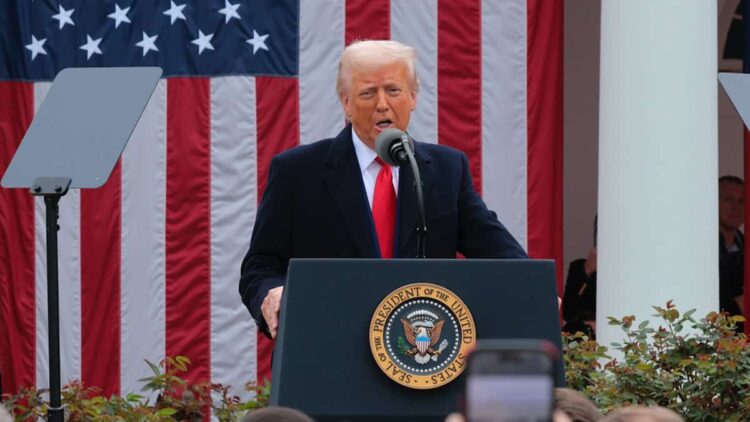As President Donald Trump embarks on his second term, the state of our education system is not just pivotal, but also urgent. The decisions made now will shape the future of our schools and our society.
The previous cautious approach to educational policy has been replaced by a sweeping ideological transformation that portrays educators as adversaries and federal support as conditional.
From the outset, President Trump made his intentions clear: the education system, as it exists, is broken.
He accused schools of teaching children to hate their country and to feel ashamed of themselves, vowing to implement an aggressive reversal of these practices. However, this rhetoric has now transcended mere words.
Decisions from the Oval Office are actively reshaping how American classrooms operate and who feels welcome within them.
Fear and confusion now resonate through public school hallways and college campuses alike. Tension has supplanted routine. Students, the very heart of our education system, are feeling the brunt of these changes, unsure of their place in a system that seems to be turning against them.
Amidst the fear, a quiet but growing resolve is emerging among teachers, parents, and students. They are determined to defend the core values of public education—truth, access, and dignity. This resilience is a source of hope in these challenging times.
Despite our political differences, there is a remarkable unity in what we want for our children. We all desire safe, inclusive classrooms that foster learning and growth.
They want teachers who are supported and trained, not censored or fearful. They seek a school system where children are emotionally nurtured as well as intellectually challenged.
Students want to learn the truth—about their country, the world, and themselves. They yearn for the freedom to ask difficult questions and the assurance that their identities are valued rather than viewed as liabilities.
Educators want the freedom to teach, guide, and connect with students in meaningful ways. They seek respect for their expertise rather than being subjected to politically motivated accusations.
Together, these aspirations form a vision of education that is inclusive, honest, and forward-looking. However, that vision is currently under threat.
What’s Going Wrong: Policy Shocks and Cultural Battles
The Trump administration’s sudden decision to halt nearly $5 billion in previously approved education funds has sent shockwaves through schools across the country.
This funding was not for the future; it was money that had already been allocated, budgeted, and in some cases, promised to specific programs.
The freeze affects thousands of school districts, many of which rely on these resources for teacher training, STEM development, and support services for English language learners. These are not just abstract programs, but crucial elements of a well-rounded education that are now under threat.
Smaller, rural, and high-poverty districts are being hit the hardest. As a result, some administrators now face impossible choices: eliminate programs or increase class sizes, cut staff or delay building repairs.
This is not just a financial blow; it is a betrayal of planning and a destabilizing shock to schools that were already stretched thin.
To dismantle what the administration labels “discriminatory” DEI (diversity, equity, and inclusion) programs, a new executive order requires institutions to certify that they are not operating programs violating federal anti-discrimination laws. However, the order lacks clear definitions.
Colleges now find themselves in a regulatory maze, unsure if scholarships for underrepresented students, affinity groups, or cultural competency training could risk legal action. Even institutions with billion-dollar endowments are not exempt from federal investigations.
Instead of promoting fairness, this ambiguity breeds fear. Leaders who once championed DEI initiatives are being advised to scale back or “reframe” their efforts quietly. What was once intended to foster belonging now faces threats.
The administration’s stance on gender identity has reversed years of progress. Two executive orders require binary definitions of sex, remove inclusive language from federal documents, and prohibit agencies from recognizing gender identity in program eligibility.
Policies that once allowed transgender students to participate in sports, access gender-affirming housing, or be recognized by their chosen pronouns are now under review. Institutions face a tough dilemma: adhere to their values and risk federal repercussions, or comply and betray the trust of their students.
What may seem like policy is experienced as erasure. For LGBTQ+ students, these actions resonate deeply, sending a message that their existence is subject to political approval.
Another wave of concern revolves around immigration. While sweeping raids may be unlikely, the administration has indicated increased scrutiny of international students and outspoken visa holders. Some colleges have advised international students to avoid public protests or politically sensitive posts on social media.
Educators are navigating a delicate balance, trying to protect students without risking institutional consequences. Many are discreetly updating protocols, distributing “know your rights” materials, and training staff on how to respond if immigration officials arrive.
The learning environment has shifted to one of fear. Students who once felt embraced now feel exposed.
Since January, the Department of Education has seen a dramatic reduction in staff, with nearly half of its workforce cut through retirements, buyouts, and hiring freezes.
This isn’t just about bureaucracy; it’s about capacity. Fewer employees mean fewer investigations into discrimination, fewer protections for students with disabilities, and fewer experts reviewing grant applications or ensuring Title IX compliance. In short, there is less oversight just when schools need it most.
Teachers have long been underpaid and overworked, and now many feel under siege. Branded as indoctrinators, accused of bias, and scrutinized for their syllabi, they find themselves navigating not only lesson plans but also potential landmines.
However, the reality in most classrooms is far from these caricatures. Teachers are not political operatives; they are frontline mentors. They teach empathy through literature, model conflict resolution, guide students through trauma, responsibly teach about the Holocaust, and explain the nuances of American history without shame.
To do this work is an act of patriotism. Being labeled as un-American for fulfilling this role feels like a wound.
For many educators, this moment has led to a personal reckoning. Should they stay and fight for their students, or leave a profession that no longer feels safe? The decisions they make in the coming months will shape not only their careers but also the classrooms they serve.
Amid the upheaval, there is room for clarity. Here are five guiding principles to rebuild trust and integrity in education:
- Uphold Truth: Students deserve an honest education. Facts, even uncomfortable ones, are not political. They are essential.
- Support Vulnerable Learners: Immigrant children, disabled students, and LGBTQ+ youth must not be made political targets. Schools should be sanctuaries of support.
- Respect Educators: Trust teachers to do their jobs. They are trained professionals, not partisan pawns.
- Protect Free Thought: Classrooms must remain spaces for critical thinking, respectful debate, and curiosity—not fear.
- Fund Education Fully: Budgets are moral documents. A nation that claims to value education must invest accordingly.
At stake is not only the curriculum but also the character of our country. Education is not a tool in a culture war; it is the foundation for the society we are building.
The next generation is observing how we respond to these challenges. Will we demonstrate courage, compassion, and clarity, or will we succumb to chaos?
Let us not fail them.
Let us advocate for classrooms where truth is embraced, for schools where every child feels welcome, and for teachers who can educate without fear.
Because what happens in education does not just shape students; it shapes America.










